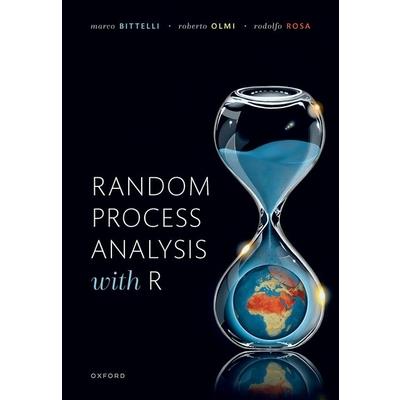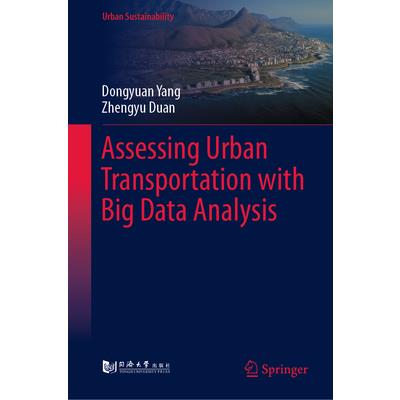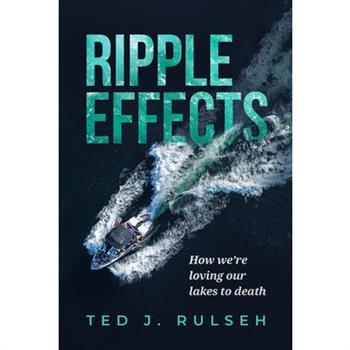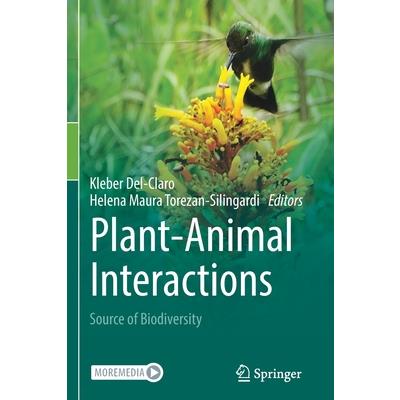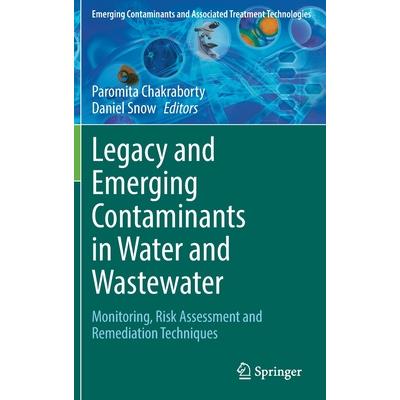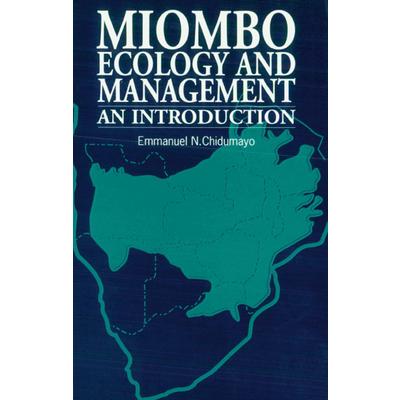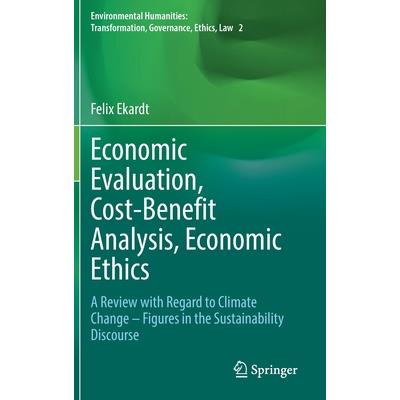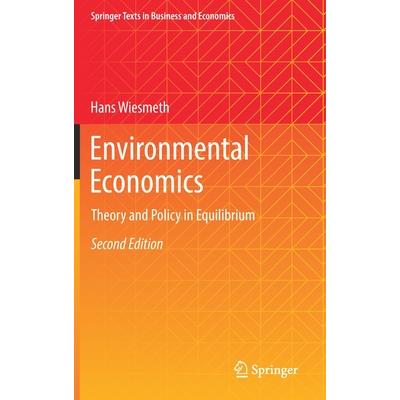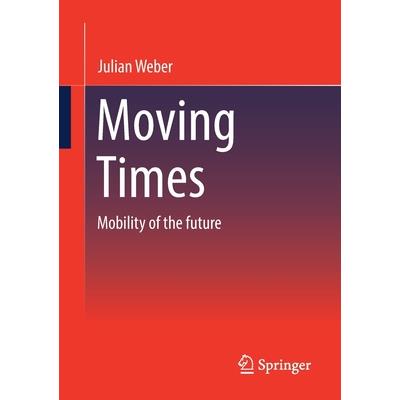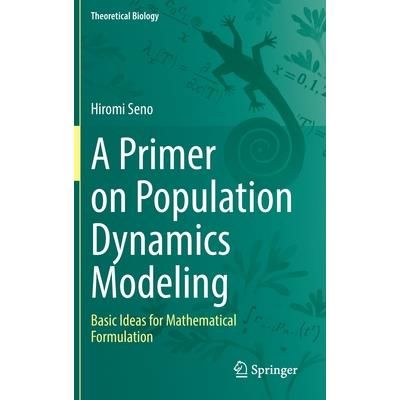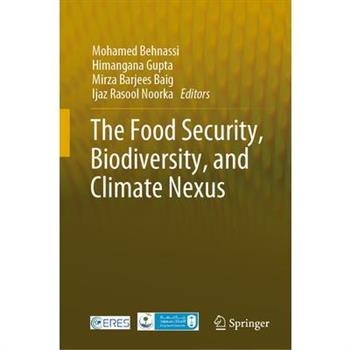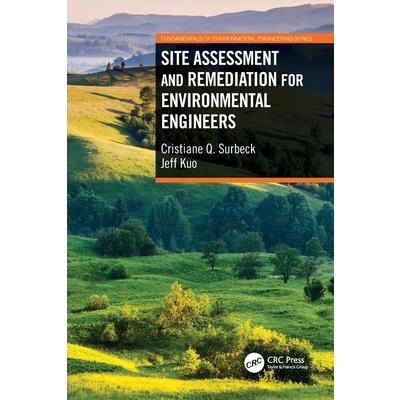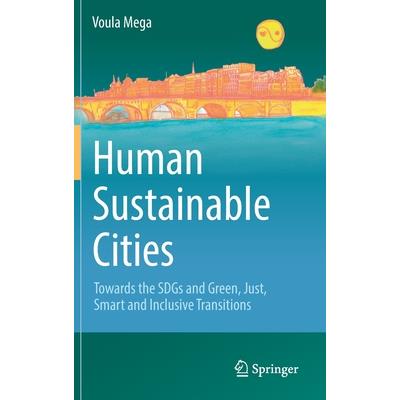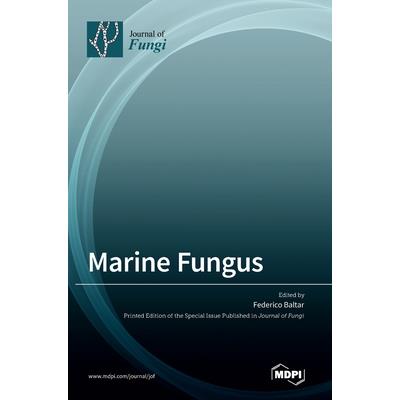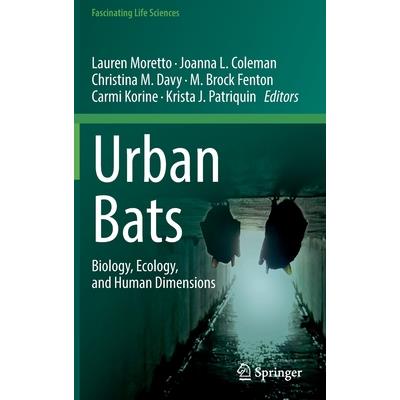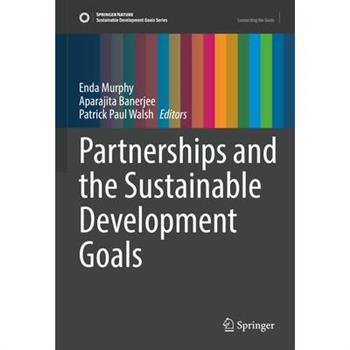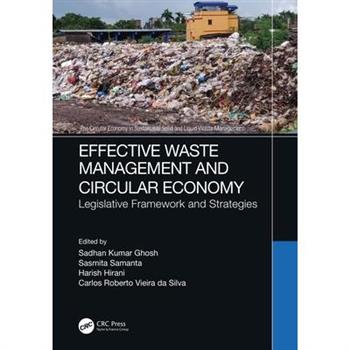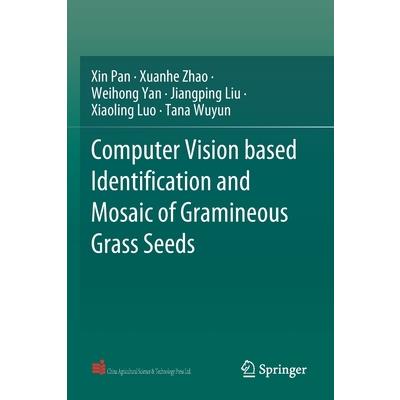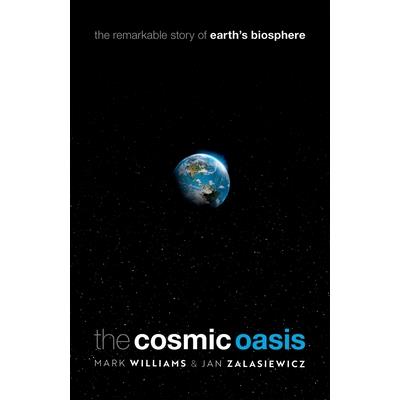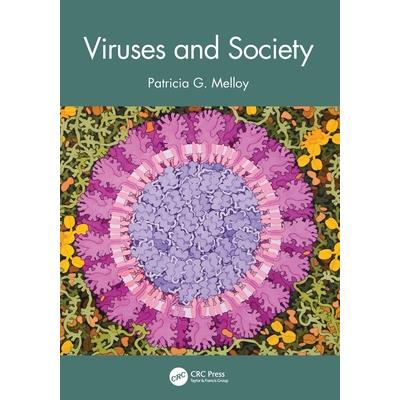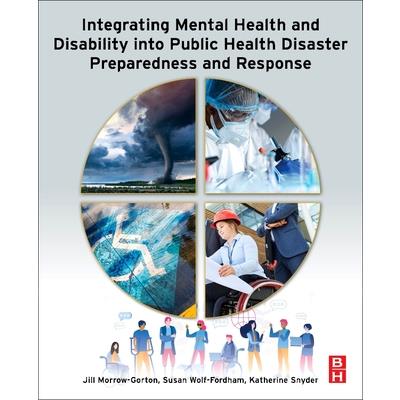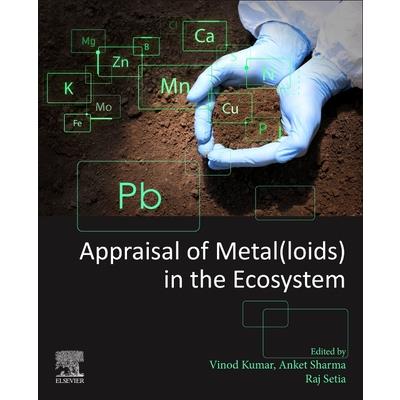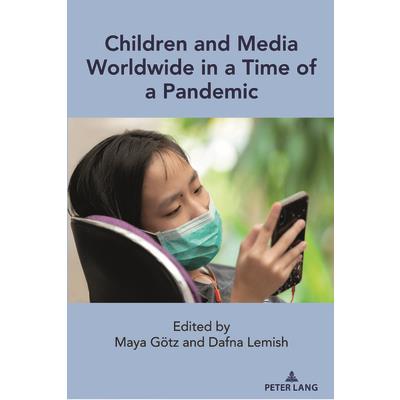Random Process Analysis with R
Random process analysis (RPA) is used as a mathematical model in physics, chemistry, biology, computer science, information theory, economics, environmental science, and many other disciplines. Over time, it has become more and more important for the provision of computer code and data sets. This book presents the key concepts, theory, and computer code written in R, helping readers with limited initial knowledge of random processes to become confident in their understanding and application of these principles in their own research. Consistent with modern trends in university education, the authors make readers active learners with hands-on computer experiments in R code directing them through RPA methods and helping them understand the underlying logic. Each subject is illustrated with real data collected in experiments performed by the authors or taken from key literature. As a result, the reader can promptly apply the analysis to their own data, making this book an invaluable resource for undergraduate and graduate students, as well as professionals, in physics, engineering, biophysical and environmental sciences, economics, and social sciences.
New Frontiers in Environmental Toxicology
Chapter1. Electro-Magnetic Field Mobile Phone Radiation Toxicity.- Chapter2. Polar Ecotoxicology: Sources and Toxic Effects of Pollutants.- Chapter3. Occurrence and Toxicity of Phthalates in Different Microenvironments.- Chapter4. Cyanobacterial Toxicity: Cytotoxic and Antibiotic Properties of Cyanobacterial Extracts.- Chapter5. Nanotoxicology: Exposure, Mechanism and Effects on Human Health.- Chapter6. Environmental Nanotoxicology: Features, Application & Characterization.- Chapter7. Insecticidal Activities of Different Extracts of Calotropis Procera.- Chapter8. Toxicology of Organophosphate and Recent Trends in Prophylactic Approaches.- Chapter9. Pesticide Usage and Impact on Health of Women in Agriculture.
Life Cycle Sustainability Assessment (Lcsa)
Sustainable Development: New directions and strategies Quantifying the Sustainability Feedlot Production Using a Life Cycle Sustainability Assessment Framework A Comparative sustainability of Conventional and Prefabricated Prefinished Volumetric Construction (PPVC) Method LCSA Methodology and Framework Evolution of Life Cycle Sustainability Assessment: A literature review Application of Life Cycle Assessment to Evaluate the Future Energy Crops for Sustainable Energy and Bioproducts Implementing Life Cycle Sustainability Assessment in Building and Energy Retrofit Design - An Investigation on the Challenges and Opportunities A Sustainability Assessment Framework for the Australian Food Industry: Integrating Life Cycle Sustainability Assessment and Circular Economy​
Environmental Management
This contemporary textbook and manual for aspiring or new environmental managers provides the theory and practical examples needed to understand current environmental issues and trends. Each chapter explains the specific skills and concepts needed for today's successful environmental manager, and provides skill development exercises that allow students to relate theory to practice in the profession. Readers will obtain an understanding not only of the field, but also of how professional accountability, evolving science, social equity, and politics affect their work. This foundational textbook provides the scaffolds to allow students to understand the environmental regulatory infrastructure, and how to create partnerships to solve environmental problems ethically and implement successful environmental programs.
Environmental Management
This contemporary textbook and manual for aspiring or new environmental managers provides the theory and practical examples needed to understand current environmental issues and trends. Each chapter explains the specific skills and concepts needed for today's successful environmental manager, and provides skill development exercises that allow students to relate theory to practice in the profession. Readers will obtain an understanding not only of the field, but also of how professional accountability, evolving science, social equity, and politics affect their work. This foundational textbook provides the scaffolds to allow students to understand the environmental regulatory infrastructure, and how to create partnerships to solve environmental problems ethically and implement successful environmental programs.
Water
Discover the hydrosocial cycle and the impact of power, knowledge, and scarcity on water rights and use through this engaging and student-friendly textbook In Water: A Critical Introduction, a team of distinguished researchers delivers an expert examination of our most pressing water-related challenges, arguing that flows of water are shaped by social practices and geometries of power. Combining first-hand research and headline case studies, the authors reveal the hydrosocial relations often hidden in mainstream accounts of water, delving into current issues like water scarcity, floods, global water governance, legal conflicts, human rights, potable water provision, health, the water-food-energy nexus, and much more. Spanning five centuries, this comprehensive volume reflects on how imperial expansion has shaped hydrosocial relations in and between Europe, Asia, Africa, and the Americas, how water demand has changed over time, and how this change impacted lifestyle. As the first major text to synthesize critical water research in both local and global perspectives, this book is anchored by clear and compelling arguments -- the "four planks" -- and supported by the authors' original research and up-to-date synthesis of the latest critical research on major water problems. It also includes maps, illustrations, and additional learning materials to be used by educators. Readers will find: A lively and thorough introduction that explains why a critical approach is necessary to fully understand our current water challenges, with a focus on the "skeptical superhero" A global approach to key debates in water issues, including large dams, privatization, transboundary conflicts, agriculture and irrigation, water and sanitation provision, human rights, governance dilemmas, and the Sustainable Development Goals Comprehensive explorations of the roles played by expert knowledge, global capital, climate change, and justice struggles in the hydrosocial cycle Critical theoretical perspectives that integrate environmental social sciences, feminist critique, and a broadly defined political economy with the specificities of water resources Fulsome treatments of water governance, science, and management, including the origins and implications of neoliberal approaches to the privatization, commodification, and financialization of water An accessible text that "invites the reader" on a critical journey Water: A Critical Introduction is a key text for advanced high school, undergraduate, and graduate students who want a keener understanding of trends in environmental management, political ecology, and water governance, science, and engineering. Written with an interdisciplinary audience in mind, this book will benefit students taking courses in environmental studies, environmental law, geopolitics, international studies, human geography, hydrology, engineering, environmental economics, and related disciplines.
Ripple Effects
Lakes are among the Upper Midwest's greatest treasures and most valuable natural resources. The Great Lakes define the region, and thousands of smaller lakes offer peace, joy, and recreation to millions. And yet, in large part because of the numbers of people who enjoy the local waterways, the lakes of Wisconsin, Michigan, and Minnesota face numerous challenges. Invasive species, pollution, defective septic systems, inadequate shoreland zoning laws, and climate change are present and increasingly existential threats. We are, quite possibly, loving our lakes to death. In his engaging and conversational style, Ted Rulseh details each of these challenges and proposes achievable solutions. He draws on personal experience, interviews, academic research, and government reports to describe the state of the lakes, the stresses they are under, and avenues to successful lakeside living for a sustainable future. Ripple Effects will be a go-to source for all who love lakes and who advocate for their protection; its driving question is summed up by one of Rulseh's interviewees: "We love this lake. What can we do to keep it healthy?"
Poison Powder
In 1975 workers at Life Science Products, a small makeshift pesticide factory in Hopewell, Virginia, became ill after exposure to Kepone, the brand name for the pesticide chlordecone. They made the poison under contract for a much larger Hopewell company, Allied Chemical. Life Science workers had been breathing in the dust for more than a year. Ingestion of the chemical made their bodies seize and shake. News of ill workers eventually led to thediscovery of widespread environmental contamination of the nearby James River and the landscape of the small, working-class city. Not only had Life Science dumped the chemical, but so had Allied when the company manufactured it in the 1960s and early 1970s. The resulting toxic impact was not only on the city of Hopewell but also on the faraway fields where Kepone was used as an insecticide. Aspects of this environmental tragedy are all too common: corporate avarice, ignorance, and regulatory failure combined with race and geography to determine toxicity and shape the response. But the Kepone story also contains some surprising medical, legal, and political moments amid the disaster. With Poison Powder, Gregory S. Wilson explores the conditions that put the Kepone factory and the workers there in the first place and the effects of the poison on the people and natural world long after 1975. Although the manufacture and use of Kepone is now banned by the Environmental Protection Agency, organochlorines have long half-lives, and these toxic compounds and their residues still remain in the environment.
Legacy and Emerging Contaminants in Water and Wastewater
Part 1: State of the science on organic micropollutants in water and wastewater.- Chapter 1-Emerging contaminants in water and wastewater: monitoring, risk assessment and remediation techniques.- Chapter 2-Legacy and emerging contaminants in water: Origin, distribution and implications for human exposure and health.- Chapter 3-Groundwater contamination by persistent organic pollutants in India- A review.- Chapter 4-Fate, Transport and Effects of Pharmaceuticals and Personal Care Products in Urban Environment.- Chapter 5-Phenoxyacid herbicides in water ecosystems- a review on their fate, risk assessment and remediation techniques.- Part 2: Monitoring of organic micropolluntants and their associated risks.- Chapter 6-Water contamination and sources of plasticizers in Asia: a review.- Chapter 7-Antifouling Strategies & Environmental Issues in Industrial Cooling Water Systems in the Marine Environment.- Chapter 8-Measuring emerging contaminants in freshwater systems.- Chapter 9-Optical Techniques in Monitoring of Persistent Organic Pollutants (POPs) in Water and Waste Water.- Part 3: Current approaches for remediation of organic micropollutants.- Chapter 10-Pharmaceuticals in Indian Aquatic Environment: Risk and Implications for Management.- Chapter 11-Suspect and Non-target Screening of Pharmaceuticals in Water and Wastewater Matrices.- Chapter 12-Human exposure and health risks.- Chapter 13-Carbamazepine Residues in Wastewater and River Water: Occurrence, Estimation of Use, and Disposal of this Drug in a Small Community in Western Kentucky, USA.- Chapter 14-Source, Treatment and Management Options of Contaminants of Emerging Concerns (CECs) in Water.- Chapter 15-Emerging Contaminants in Water: Potential Risks and Remedial Techniques.- Chapter 16-Emerging Contaminants Removal from Domestic Wastewater by Advanced Treatment Technologies.- Chapter 17-Treatment Technologies for Emerging Contaminants in Water and Wastewater.- Chapter 18-Novel strategies to treat organic micropollutants.- Chapter 19-Advanced treatment technologies to combat antibiotic resistant bacteria and antibiotic resistance genes from urban wastewater.- Chapter 20-Nanotechnology based treatment strategies for removal of antibiotic and antibiotic byproducts from waste water.- Chapter 21-Levels, sources and removal efficiency of PCDDs/PCDFs and dl-PCBs in water and wastewater in Poland and Europe under the European water directives.
Making the Green Revolution
In November 2017, the International Center for Tropical Agriculture (CIAT) celebrated its fiftieth anniversary at its headquarters outside Palmira, Colombia. As an important research center of the so-called Green Revolution in agricultural science and technologies, CIAT emphasizes its contributions to sustainability, food security, gender equity, inclusive markets, and resilient, climate-smart agriculture. Yet these terms hardly describe the Cauca Valley where CIAT is physically located, a place that has been transformed into an industrial monoculture of sugarcane where thirteen Colombian corporations oversee the vast majority of this valley's famously fertile soil. This exemplifies the paradox Timothy W. Lorek describes in Making the Green Revolution: an international research center emphasizing small-scale and sustainable agricultural systems sited conspicuously on a landscape otherwise dominated by a large-scale corporate sugarcane industry.Utilizing archives in Colombia, Puerto Rico, and the United States, Lorek tracks the paradoxical but intertwined twentieth-century processes that produced both CIAT and sugar in the Cauca Valley. This history reveals how Colombians contributed to the rise of a global Green Revolution and how that international process in turn intersected with a complex and long-running rural conflict in Colombia.
Making the Green Revolution
In November 2017, the International Center for Tropical Agriculture (CIAT) celebrated its fiftieth anniversary at its headquarters outside Palmira, Colombia. As an important research center of the so-called Green Revolution in agricultural science and technologies, CIAT emphasizes its contributions to sustainability, food security, gender equity, inclusive markets, and resilient, climate-smart agriculture. Yet these terms hardly describe the Cauca Valley where CIAT is physically located, a place that has been transformed into an industrial monoculture of sugarcane where thirteen Colombian corporations oversee the vast majority of this valley's famously fertile soil. This exemplifies the paradox Timothy W. Lorek describes in Making the Green Revolution: an international research center emphasizing small-scale and sustainable agricultural systems sited conspicuously on a landscape otherwise dominated by a large-scale corporate sugarcane industry.Utilizing archives in Colombia, Puerto Rico, and the United States, Lorek tracks the paradoxical but intertwined twentieth-century processes that produced both CIAT and sugar in the Cauca Valley. This history reveals how Colombians contributed to the rise of a global Green Revolution and how that international process in turn intersected with a complex and long-running rural conflict in Colombia.
The Environmental Impacts of Disasters and Armed Conflicts in East Africa Region
This book about the disaster-conflict-environment nexus is based on empirical evidence gathered from the region of East Africa, where a series of combinations of natural disasters and armed conflict have devastated not only the political economy, but also the physical environment. Each of the chapters are self-contained research outcomes describing the core problems faced by typical subsistence farming communities and forcibly-displaced persons-- that is, refugees and Internally Displaced Persons (IDPs)-in five East African countries that have been living under recurring major disasters and conflicts. The book describes the role of the disaster-conflict interaction on land cover removal; how the socio-economic standing of communities in the five nations was shaped by the crises; the community's perceptions of climate change and their capacity to adapt to extreme disruptions. The final section presents a review of current environmental care practices in international aid and a set of proposed field processes and tools that can be used to mitigate environmental degradation. This section first defines potential environmental damage likely to be caused by various natural hazards, as well as those that can emerge in the process of emergency relief, recovery, or developmental efforts. Finally, it presents practical guidelines on how to entrench environmental factors in international aid programs.
Miombo Ecology and Management
This book provides comprehensive details of the climate, environment, ecology and species characteristic of Miombo, and describes methods for assessing the timber and other resources, through inventories, in order to use the forest sustainably.
Environmental Contaminants and Neurological Disorders
1-Pathogenesis of neurodegeneration and associated neurological disorders.- 2-Air pollutants and neurological disorders: From exposure to preventive interventions.- 3-Bacterial endotoxins and neurological disorders: From exposure to preventive interventions.- 4-Heavy metals and neurological disorders: From exposure to preventive interventions.- 5-Pesticides and neurological disorders: From exposure to preventive interventions.- 6-Cigarette smoking and neurological disorders: From exposure to preventive interventions.- 7-Mycotoxins and neurological disorders: From exposure to preventive interventions.- 8-Polycarbonate plastics and neurological disorders: From exposure to preventive interventions.- 9-Bisphenol A and neurological disorders: From exposure to preventive interventions.- 10-Volatile organic compounds and neurological disorders: From exposure to preventive interventions.- 11-Persistent organic pollutants and neurological disorders: From exposure to preventive interventions.- 12-Polychlorinated biphenyls and neurological disorders: From pathogenesis and preventive interventions.- 13-Phthalates and neurological disorders: From exposure to preventive interventions.- 14-Perfluoroalkyl chemicals and neurological disorders: From exposure to preventive interventions.- 15-Polycyclic aromatic hydrocarbons and neurological disorders: From exposure to preventive interventions.- 16-Nanomaterials as source of environmental contaminants: from exposure to preventive interventions.
Economic Evaluation, Cost-Benefit Analysis, Economic Ethics
Chapter 1: Problem and Fundaments.-Chapter 2. Idea-historical foundations and dubious (standard) objections to cost-benefit analysis.- Chapter 3. Frictions on the application level: costs and benefits, discounting, uncertainty, fact base.- Chapter 4. Collision of the cost-benefit analysis with liberal-democratic basic principles and the claim of validity of law.- Chapter 5. Cost-benefit analysis without convincing theoretical basis.- Chapter 6. Remaining relevance of cost-benefit elements in balancing.
Environmental Economics
Introduction.- PART I THE ENVIRONMENTAL MOVEMENT.- Differing Views on the Environment.- The International Dimension of the Environment.- PART II THEORETICAL ENVIRONMENTAL ECONOMICS.- Basics of Environmental Economics.- Allocation Problems in a Market Economy.- The Internalization of External Effects.- Public Goods in Environmental Economics.- PART III ENVIRONMENTAL POLICY.- From Theory to Policy: Information Deficits.- Command-and-Control Policy.- The Price-Standard Approach to Environmental Policy.- International Environmental Commodities and the Principal-Agent-Approach.- Holistic Environmental Policies.- PART IV THE ENVIRONMENT IN THE GLOBALIZED WORLD.- Trade and the Environment: The Legal Context.- Overfishing.- Integration of Trade and the Environment.
A Guide to Career Resilience
Mentors and sponsors are essential to career success, but these close relationships are not always free from trouble. This book shares advice and practical examples on how to survive and thrive throughout your career by differentiating between good and bad guidance you receive from mentors and sponsors. Real-life guidance is provided on how to manage troubled mentoring and sponsoring relationships at work.
Energy Futures
Chapter1. The Anomaly.- Chapter2. The Energy Past.- Chapter3. The Energy Present.- Chapter4. Greenhouse Gas and Climate Change.- Chapter5. Replacing Fossil Fuels.- Chapter6. Zero Carbon Electricity.- Chapter7. Zero Carbon Vehicles.- Chapter8. Geoengineering.- Chapter9. The Energy Future.- Chapter10. Leaving the Cradle.
Moving Times
Will we really soon no longer be sitting behind the wheel of our own car, but will only be taken to our destination by driverless electric taxis? Should cities introduce car sharing? What role will electric scooters, cable cars or man-carrying drones play in the mobility systems of major cities? This book finally explains in a generally understandable way what is really behind buzzwords such as electric mobility, autonomous driving, digitalization and mobility services such as car sharing or ride-hailing, how far advanced these technologies are today, and above all in what relationships and dependencies they are to each other. In addition to the technical aspects, the legislative and social trends are also considered, which are important framework conditions that will have a decisive influence on the mobility of the future. From the contents - Mobility needs: Who wants to go where, when and why - and how will this change in the future? - Technological trends: electromobility, digitalization, autonomous driving - what will the vehicles of the future be capable of? - Car sharing, ride-hailing, e-scooters or public transport: What alternatives to the private car will there be in the future? - Politics and society: How will the framework conditions for mobility develop in the future? - Mobility in transition: What should we do to prepare for the future?
Fostering Sustainable Business Models Through Financial Markets
The aim of this volume is to foster more sustainable business models through financial markets. To that end, it is necessary to know the main global challenges facing financial markets and their impact on creating sustainable value in business models of enterprises in the context of sustainable adaptation. The book focuses on assessing the decision criteria adopted by financial markets in the process of transaction risk valuation, in terms of the presence of Environmental, Social, and Governance (ESG) criteria, and by assessing the impact of including these criteria in the risk assessment process by financial markets in business decisions, leading as a consequence to building new value in the form of a sustainable business model. The book presents global ESG risks facing the financial markets, and discusses how ESG risks are managed and monitored, and how financial markets can measure and operationalize extra-financial risks in its assessment process. The book alsoanalyses ESG risk implications and influences on company behavior, and the actions that companies should take considering the ESG assessment requirements of financial markets. Finally, it provides a comprehensive, structured, and systematic view of how financial markets and companies should adapt and improve their business models. The book provides unique challenges for investors, companies, financial markets, and for our society as a whole, advancing traditional risk management approaches to address global risks.
Sustainability
This book provides relevant theoretical frameworks and the latest empirical research findings in Operations Research (OR) and Management Science (MS) as applied to sustainability. Its goal is to identify and describe ways in which OR and MS have been applied to and influenced the development of sustainability. Many of the issues we face today stem from the interconnectivity of the economy, society, and the environment, and from how both the economy and society are affecting the environment. In response, there have been a range of local and global efforts to advance society without harming the natural environment. The book showcases how OR/MS can help to address these issues, specifically with regard to renewable energy, smart industry, smart cities, transportation, smart homes and devices, etc. This book is intended for professionals in the fields of energy, engineering, information science, mathematics and economics, and for researchers who wish to develop new skills in connection with sustainability, or whose work involves sustainability.
A Primer on Population Dynamics Modeling
This textbook provides an introduction to the mathematical models of population dynamics in mathematical biology. The focus of this book is on the biological meaning/translation of mathematical structures in mathematical models, rather than simply explaining mathematical details and literacies to analyze a model. In some recent usages of the mathematical model simply with computer numerical calculations, the model includes some inappropriate mathematical structure concerning the reasonability of modeling for the biological problem under investigation. For students and researchers who study or use mathematical models, it is important and helpful to understand what mathematical setup could be regarded as reasonable for the model with respect to the relation between the biological factors involved in the assumptions and the mathematical structure of the model. Topics covered in this book are; modeling with geometric progression, density effect in population dynamics, deriving continuous time models from discrete time models, basic modeling for birth-death stochastic processes, continuous time models, modeling interspecific reaction for the continuous time population dynamics model, competition and prey-predator dynamics, modeling for population dynamics with a heterogeneous structure of population, qualitative analysis on the discrete time dynamical system, necessary knowledge about fundamental mathematical theories to understand the dynamical nature of continuous time models. The book includes popular topics in ecology and mathematical biology, as well as classic theoretical topics. By understanding the biological meaning of modeling for simple models, readers will be able to derive a specific mathematical model for a biological problem by reasonable modeling. The contents of this book is made accessible for readers without strong Mathematical background.
The Food Security, Biodiversity, and Climate Nexus
This volume is the outcome of an international cooperation between 73 scientists, experts, and practitioners from many countries, disciplines, and professional areas. As a part of a series of CERES publications, the volume attempts to contribute to the scientific debate about the food-biodiversity-climate nexus by developing a comprehensive region-specific and broader global understanding of the linkages between these areas, especially in the context of Global South. Instead of providing only modern science-based solutions for the nexus related challenges, the volume covers case studies that present mixed solutions, offering the use of traditional ecological knowledge in combination with modern science for both resilience and sustainability. This is increasingly instrumental in shaping the needed response options regarding the economic, social, and environmental future of the world. Based on a multi-regional and cross-sectoral analysis, the approach consists of: assessing the differentnatural and anthropogenic factors currently affecting ecosystems and their services, especially the impacts of climate change; highlighting the different linkages between the state of biodiversity and food systems in many contexts and scales; and exploring the various response mechanisms to effectively manage the implications of such linkages. Most chapters provide inputs for future relevant research and policy agendas.
Relative Sea-Level Changes and their Impact on Coastal Zones
In the last few centuries, the study of sea-level changes along the world's shores has been a primary scientific focus in analyses of climate change, but also for scientists exploring past landscape evolution, geomorphological processes, human impacts, and system responses. The relative variation in sea level derives as a result of global, regional, and local processes. All these processes are spatially and temporally variable and cause complex sea-level changes at both regional and local scales. A multidisciplinary approach addressed to palaeo sea-level reconstructions at regional and local scale is the best method to understand the role of natural and anthropogenic forcing in the landscape evolution, as well as to discover the historical human adaptions to natural modifications of the landscape. Definitely, investigating these regional and local patterns is mandatory to reconstruct possible scenarios of the relative sea level rise impacts and to prepare the adaptation of coastal communities threatened by future climate changes. The aim of this Special Issue has been to collect contributions addressing and discussing methodological and multi-disciplinary approaches to studying the regional and local coastal modifications in relation to historical and recent relative sea-level changes to hypothesize future trends.
Site Assessment and Remediation for Environmental Engineers
This book serves as a primary textbook for environmental site investigation and remediation of subsurface soil and groundwater. It introduces concepts and principles of field investigative techniques to adequately determine the extent of contamination in the subsurface for the selection of cleanup alternatives. It then focuses on practical calculations and skills needed to design and operate remediation systems that will both educate students and be useful for entry-level professionals in the field. Features: - Examines the practical aspects of investigating and cleaning up contaminated soil and groundwater- Contains scenarios, illustrations, equations, and example problems with discussions that illustrate various practical situations and interpret the results- Includes end-of-chapter problems to reinforce student learning- Provides a regulatory and risk analysis context, as well as public and community involvement aspects- Discusses sustainability and performance assessment of the remediation methods presented Site Assessment and Remediation for Environmental Engineers provides upper-level undergraduate and graduate students with practical, project-oriented knowledge of how to investigate and clean up a site contaminated with chemicals and hazardous waste.
Human Sustainable Cities
Chapter1. A Planet of Cities at Times unlike Any Other: Towards the 2030 SustainableDevelopment Agenda.- Chapter2. Urban Ecology and Humanism: Pathways to Regeneration.- Chapter3. Climate-Conscious Cities: The Critical Decade.- Chapter4. The Energy Race to Decarbonisation.- Chapter5. Sustainable Circular Economies for Transformative Cities.- Chapter6. A New Social Contract for Healthy, Safe and Happy Cities for All.- Chapter7. Cities as Living Labs of Knowledge, Co-creation and Innovation.- Chapter8. Accountable Strategic Planning and Citizen Engagement.- Chapter9. Cities in Concert for the Global Sustainability Transition.- Annex: Best Practices, Lighthouse Initiatives and Paradigm Shifts.
Marine Fungus
Most of the available studies on marine fungi are based on the isolation and identification of fungi from different surfaces (e.g., submerged wood, sediments, macrophytes), mostly in coastal benthic environments. However, recent evidence suggests that fungi are also present in the oceanic water column, most likely mainly associated to particles, with the genomic potential to significantly contribute to marine biogeochemical cycles. Still, we lack even basic information on the ecology of the oceanic mycobiome, precluding us from determining the ecological role of this enigmatic kingdom in our oceans. The aim of this book and Special Issue was to focus on the ecology of marine fungi. Topics include, fungal abundance, distribution, activity, and phylogenetic and/or functional diversity in coastal to open ocean environments, including seawater column and sediments, derived both from laboratory and field studies.
Circular Economy and Waste Valorisation
The authors and editors of this volume state that with the intensive growth of global industrialization and urbanization, the consumption of various resources and materials, such as energy, minerals, and even water, is increasing at an amazing speed, which poses great pressure on material resources. In addition, the massive utilization of materials has led to low efficiency, resulting in great wastes of resources as well as serious environmental pollutions and degradation, which has severely hindered the sustainable development of economy and society. In order to transit to sustainable development, it is necessary to improved resource efficiency, and circular economy and waste valorization are the best alternative ways for achieving this goal. This book aims to provide an in-depth description of circular economy and waste valorization, make assessments for circular economy and waste valorization in different regions and countries and determine thetechnological pathways and roadmap for achieving circular economy and waste valorization. More specifically: (1) Conceptions and Theories: Concepts and definitions of circular economy and waste valorization and their nexus and contributions to sustainable development. (2) Policy and Practice: Measurement and assessment of performance or sustainability for implementing circular economy and waste valorization. (3) Pathways and Prospects: Identification and prioritization of the barriers, strategies, technologies, and pathways for achieving circular economy and waste valorization. The book systematically and comprehensively introduces the definitions, concepts, framework and nexus of circular economy and waste valorization, analyzes and measures their performance and sustainability and provides the methods for investigating and prioritizing the barriers and strategies and determining the pathways and roadmap for their development.
Urban Bats
The Anthropocene is the "age of human influence", an epoch well known for its urban impact. More than half of all people already live in cities, and this proportion is expected to rise to almost 70 percent by 2050. Like other species in urban areas, bats must contend with the pressures of profound and irreversible land cover change and overcome certain unique challenges, such as the high density of roads, lights, glass, and free-ranging domestic animals. Research on urban bats in recent decades indicates that when it comes to urban life, some bats are synanthropes. In other words, although most species of bats are negatively impacted by urbanisation, many appear to not only succeed, but also thrive in cities and towns. This observation has inspired interesting questions about bats in relation to urbanisation. Which traits and behaviours equip bats for urban success? What features of urban areas increase the likelihood that bats will successfully persist there or even colonize newareas? And how does the success of urban bats affect co-habiting humans?Our book explores the interactions between bats and urban environments through case studies and reviews. Understanding how different species interact with urban environments can reveal potential opportunities to mitigate urban threats to bats and threats posed by bats to other urban organisms, including humans. With this book, we thus aspire to provide a knowledge base to help guide current and future efforts to conserve bats.
Partnerships and the Sustainable Development Goals
This volume fills a significant gap in the scientific and policy literature on the Sustainable Development Goals (SDGs) and on SDG 17 which focuses on partnership as a means of implementation (MOI) for the SDGs. The collection offers a strong theoretical context, and outlines the nature of partnerships (e.g. alternative forms, multi-level forms, barriers to take-up) using the most recent UN database as well as through key case studies that highlight partnership successes and failures at local, national and global scales. The text covers a brief history and background of partnerships and the SDGs, an analysis of existing SDG partnership using UN data, a scalar analysis of case studies involving multi-stakeholder partnerships, and recommendations for successful partnership models and implementation strategies. The book will be relevant for a wide variety of readerships including academics in different policy fields and disciplines, policymakers, SDG advocates and practitioners, and NGOs active in the promotion of the SDGs and environmental issues. Provides a unique outline of partnership theory and its application to the SDGs Outlines the nature of partnerships, including their multi-level forms and barriers to take-up using UN data Analyzes key SDG partnerships case studies that highlight partnership success stories for practitioners
Environmental Planning and Modeling
The focus of this reprint is on environmental planning and modeling. It examines articles on green consumption, biodiversity, and household waste recycling, as well as presenting a review of the trend in publications on household waste recycling. A number of country-based applications are presented and models are used to show how multiple perspectives can be considered in policy making. This reprint will be of special interest to researchers and readers involved in sustainability management. Further, although some chapters present models to solve sustainability problems, they also share policy and decision-making frameworks for applying such models.
Effective Waste Management and Circular Economy
Effective Waste Management and Circular Economy: Legislative Framework and Strategies is an invaluable resource for researchers, policymakers, implementers and PhD, graduate and Under Graduate level students in universities and colleges analysing the legal framework, strategies in waste management, circular economy adoption, use of mathematical and statistical modelling in setting waste management strategies, sanitation and Hygiene in waste management. While huge wastes are wasted by dumping, there is potential of resource circulation by enforcing legislative framework to effective resource utilisation and creating business opportunities. Circularity of resources in waste streams can contribute to a more secure, sustainable, and economically sound future through the followings: Effective legal framework, strategies and policy instruments, Adoption of circular economy and recycling technologies, Support of IoT and appropriate decision making and modelling, Adoption of alternatives to plastics and other hazardous materials, Economic feasibility as business case, commercialisation, generating employment. This book addresses most of the above issues in a lucid manner by experts in the field from different countries, which are helpful for the related stakeholders, edited by experts in the field.Sadhan Kumar Ghosh, Professor at Jadavpur University, internationally well-known expert working in varied interdisciplinary fields including waste management having research collaboration in 40 countries.Sasmita Samanta, Pro-Vice Chancellor, KIIT Deemed to be University, Bhubaneswar, Odisha, India having research experience in management & academic administration.Harish Hirani, Director at CSIR-CMERI, Durgapur, having wider fields of research in IIT Delhi with a number of research collaboration.Carlos RV Silva Filho, Director, Presidente, ABRELPE, Sao Paulo/SP - Brazil & Presidente, International Solid Waste Association, Netherlands has experience of working in number of international projects
Economics, Ecology, and Policy for the Bioeconomy
This book calls for a holistic approach to the bioeconomy to achieve its potential in driving economic growth while simultaneously providing ecological, social and technological benefits. Essential reading for students and scholars of ecological economics, environmental economics, sustainability, innovation, and regional development.
Traditional Urbanism Response to Climate Change
Section 1 Traditional Urbanism Section 2 Climate change Section 3 Walled City of Jaipur
Computer Vision based Identification and Mosaic of Gramineous Grass Seeds
Introduction.- Forage Identification and Experimental Materials.- Identification of Gramineous Grass Seeds Using Gabor and Locality Preserving Projections.- Identification of Gramineous Grass Seeds Using Difference of Local Fractal Dimensions.- Identification of Gramineous Grass Seeds Using Local Similarity Pattern and Linear Discriminant Analysis.- Identification of Gramineous Grass Seeds Using Local Similarity Pattern and Gray Level Co-occurrence Matrix.- Microscopic Image Mosaic of Gramineous Grass Seeds.- Digital Information Platform of Grassland and Forage Based on Computer Vision.
The Cosmic Oasis
Alone in the known universe the Earth glows bright with life, a unique cosmic oasis of biodiversity which is now under threat from our own actions. The Earth is a unique as a living planet, a cosmic oasis drifting in the vastness of barren space. It is strikingly and obviously different from our nearest heavenly neighbours, the Moon, Venus and Mars, in its thin skin of biology, extending from the surface for a few kilometres into the crust, and for a few tens of kilometres into the air. But how did this remarkable abundance and diversity of life arise? How has life survived over the enormous time frame of Earth's history? And does it continue to flourish now, especially with the growing pressure for space from humans? The Cosmic Oasis examines life on Earth, from our earliest interactions with animals and plants to our absolute domination of biology. It follows our developing understanding of life's origins, its remarkable complexity, and its interactions with the air, oceans and land. It also shows how patterns of diversity across the surface of the planet evolved, and how humans are now homogenising these, degrading both biodiversity and the space in which life can exist. Within this overall trend of loss there are some remarkable examples of survival, from the beneficial relationships between the gelada monkeys and wolves of the Ethiopian highlands, and the people and brown howler monkeys of Porte Allegre in Brazil, to interactions between you and your gut microbiome. Thoughout, the authors ask what these interactions can teach us about building a better relationship with nature, and consider how we might become stewards, rather than destructive exploiters, of the life around us.
Viruses and Society
Viruses and Society is geared towards professionals and students in college-level introductory biology courses devoted to understanding viruses, vaccines, and their global impact. The beginning of the book introduces cells, DNA, and viruses themselves. There follows a review of how the immune system works and how scientists and physicians harness the immune system to protect people through vaccines. Specific chapters will focus on the 1918 influenza pandemic, the fight to eradicate polio, the HIV/AIDS pandemic, and our current COVID-19 crisis. Additionally, the book reviews the uses of viruses in genetic engineering and in gene therapy as well. The book will conclude by describing public health initiatives to keep emerging viruses in check and the role of scientific communication in how viruses are perceived and have an impact on our society. Key Features 1) The text employs approachable and simplified language 2) Provides all the essential elements for understanding virus biology 3) Includes details on how viruses affect individuals 4) Describes the ways public health decisions are made in light of how viral pathogens spread 5) Highlights up to date scientific findings on the features of emerging viruses that will always be with us
Integrating Mental Health and Disability Into Public Health Disaster Preparedness and Response
Integrating Mental Health and Disability into Public Health Disaster Preparedness and Response brings together the fields of mental/behavioral health, law, human rights, and medicine as they relate to disaster planning and response for people with disabilities, mental and behavioral health conditions and chronic illness. Children and adults with disabilities, mental/behavioral health conditions and chronic illness remain more vulnerable to the negative effects of emergencies and disasters than the general population. This book addresses the effects of emotional trauma, personal growth and resilience, the impact on physical health and systems of care, and legal compliance and advocacy. Following a philosophy of whole community emergency planning, inclusive of people with disabilities, the book advocates for considering and addressing these issues together in an effort to ultimately lead to greater resilience for individuals with disabilities and the whole community.
Appraisal of Metal(loids) in the Ecosystem
Heavy metal pollution is a serious threat to living organisms. Industrial development has aggravated multifaceted problems in the environment requiring a comprehensive solution. Appraisal of Metal(loids) in the Ecosystem addresses this need and provides a basic introduction of different heavy metals. Presented in a consistent and comprehensive manner, each chapter highlights the background level, occurrence, speciation, bioavailability, uptake detoxification mechanisms, and management of each metal in polluted soils. It provides the latest up-to-date information about different aspects of As, Hg, Si, Cu, Co, Ni, Mn, Cd, Cr, etc. in single source. This book provides scientists and researchers with the most current source of information on the topic. Written by a global and diverse group of experts, Appraisal of Metal(loids) in the Ecosystem also covers the many field applications associated with phytoremediation and extraction and provides guidance on decision making when selecting advanced techniques.
Children and Media Worldwide in a Time of a Pandemic
This edited volume focuses on the lived experiences of children during the first wave of the COVID-19 outbreak in the spring of 2020, their knowledge and emotional reactions, the adjustments they made in their everyday lives, and the strengths and skills they developed in response. A central theme of inquiry is the place media held in all of these aspects: the roles they played for children's informational, emotional, and social needs, how these have changed under the pandemic circumstances, and the media competencies children developed in utilizing and controlling the media in their lives. The book is based on responses of 4,200 children ages 9-13 to an international survey administered in 42 countries as well as additional complementaries localized studies. Comparative dimensions are central to this unique collection of chapters, along geographical and cultural lines, as well as gender, age, class, health, and refugee status. With 40 authors from around the world, this book highlights the potential of media to assist children and their families in times of crisis as well as their potential drawbacks. Lessons learned for future crises are outlined in the concluding chapter of this book, which will be an asset to scholars of children's wellbeing as well as professionals of media for children, educators, and parents.
Improving Flood Detection and Monitoring through Remote Sensing
As climate-change- and human-induced floods inflict increasing costs upon the planet, both in terms of lives and environmental damage, flood monitoring tools derived from remote sensing platforms have undergone improvements in their performance and capabilities in terms of spectral, spatial and temporal extents and resolutions.Such improvements raise new challenges connected to data analysis and interpretation, in terms of, e.g., effectively discerning the presence of floodwaters in different land-cover types and environmental conditions or refining the accuracy of detection algorithms.In this sense, high expectations are placed on new methods that integrate information obtained from multiple techniques, platforms, sensors, bands and acquisition times. Moreover, the assessment of such techniques strongly benefits from collaboration with hydrological and/or hydraulic modeling of the evolution of flood events.The aim of this Special Issue is to provide an overview of recent advancements in the state of the art of flood monitoring methods and techniques derived from remotely sensed data.
Resilience and Sustainability in Urban Africa
Resilience has become a very topical issue transcending many spheres and sectors of sustainable urban development. This book presents a resilience framework for sustainable cities and towns in Africa. The rise in informal settlements is due to the urban planning practices in most African cities that rarely reflect the realities of urban life and environment for urban development. Aspects of places, people and process are central to the concept of urban resilience and sustainable urban growth. It stems from the observation that urban vulnerability is on the increase in Zimbabwe and beyond. In history, disasters have adversely affected nations across the world, inflicting wide ranging losses on one hand while on the other hand creating development opportunities for urban communities. Cooperation in disaster management is a strategy for minimising losses and uplifting the affected urban settlements. The significance of urban planning and design in the growth and development of sustainable urban centres is well documented. Urbanisation has brought with it challenges that most developing countries such as Zimbabwe are not equipped to handle. This has been accompanied by problems such as overpopulation, overcrowding, shortages of resources and the growth of slum settlements. There need is to seriously consider urban planning and design in order to come up with contemporary designs that are resilient to current urban challenges. There are major gaps in urban resilience building for instance in Harare and the local authority needs to prioritise investment in resilient urban infrastructure. ​
Advancements in Biomonitoring and Remediation Treatments of Pollutants in Aquatic Environments
This book is a collection of a group of peer-reviewed scientific papers dealing with both the evaluation and the solution of the complex but pressing problem of water source pollution. In the case of both fresh and marine water, the environmental and health protection aspects are closely linked. Monitoring activities supply continuous information on the contamination levels in inland surface, ground, and coastal waters, providing an alert in case of increased or new contamination and monitoring the effectiveness of remediation strategies. On the other hand, new or improved remediation and bioremediation tools are urgently needed to tackle the scarcity of safe drinking water. The papers in this book represent interesting starting points for future researches.




